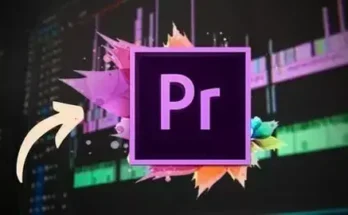Publisher: Truefire | Language: English
Video: MP4, 960×540 (16:9), 971 Kbps, 29.970 fps
Audio: MP3, 192 Kbps, 48 Khz, 2 channels
Size: 571 Mb
Harmonic & Rhythmic Embellishments for Any Song Progression
If you’re playing covers or composing your own original songs, you’ll eventually reach a point where your acoustic guitar parts start to sound bland and uninspired. That’s the time to pull out Vicki Genfan’s Acoustic Rhythm Guitar Cookbook for an immediate fix and a healthy dose of creativity and inspiration.
Because most songs use the same basic chords and progressions, you need to apply other creative approaches to spice up your guitar parts. Applying harmonic and rhythmic embellishments is the most common and effective way to make your parts sound distinctive and interesting.
”I designed this course to introduce you to 23 harmonic and rhythmic embellishments that will add new flavor and new possibilities to your guitar parts. I’ve chosen 10 popular chord progressions across 20 performance studies to give you an idea of how you might put these “ingredients” to use in songs you’re working on, already playing, or writing.”
Vicki organized the course into 10 sections. Each section features a popular chord progression and two performance studies. The performance studies demonstrate how to apply one or more harmonic and rhythmic embellishments to breathe new life and energy into your acoustic guitar parts.
Over the 20 performance studies, you will learn how to apply: Color Tones, Syncopated Strums, Muted Strums, Hammer-Ons, Muted Plucks, Body Percussion, Bassline & Hammers, Muted Bassline, Fingerpicking Pattern, More Complex Fingerpicking, Half-Barre Chords, Simple Melody Line, More Complex Melody Line, Open String Hammer Fills, Harmonic Slaps, Travis Picking Pattern, Harmonics, Simple Chicken Scratches, and Syncopation & Scratches.
For each progression and set of performance studies, Vicki will first show you the basic guitar part for that progression and then demonstrate the performance studies with embellishments applied. All of the performance studies are followed by a detailed breakdown.
ii V I IV Progression: Key of G – ”I’ll first show you how this progression might sound like with the “basic” chord shapes and a very basic strum. In the first study, we’ll add color tones and a new strumming pattern, and in the second study we’ll add a bit more syncopation to the strumming patterns.”
I IV vi ii Progression: Key of C – ”I’ll first show you an example of a “basic” version of this progression. In the first study, we’ll add color tones and right hand muting technique. In the second study, we’ll add hammer-ons.”
Folky Blues Progression: Key of A – ”This progression has a bluesy flavor, but features more folky chord voicings and rhythms. I have to admit, there’s a bit of James Taylor influence in there.”
Folky Minor Blues: Key of Em – ”Listen to the basic version of this bluesy progression. The I chord and IV chord are minor, and to indicate that in “notation-speak” we would write them as i and iv. In the first study, we’ll focus on adding a walking bass line as well as alternating bass picking. Then, we’ll add palm muting in the second study.”
Floating Sus Intro: Key of D – ”This is a progression that I created many years ago as an intro to the song “Landslide” (Fleetwood Mac). From a theory viewpoint, it’s simply composed of variations of a V chord (A7), which makes the listener long for a resolution to the I chord (D). By continuing to play different versions or voicings of the A7 chord, we build tension, which is ultimately resolved by playing the rest of the song. Building and resolving tension are key components of songwriting and arranging. In both studies, we’ll work with slash chords. In the first study, we’ll work with a beautiful fingerpicking pattern that we then embellish in the second study.”
I V IV V Progression: Key of E – ”In the first study, we’ll use a muted rhythm and what I like to call “half barre” chords, which will give us some great color tones. In the 2nd study, we’ll use the “full” barre chords, which means these chords can be moved up and down the neck, enabling you to play in many keys.”
Capoed Baroque Piece: Key of C#m – ”In the first study, we’ll pick out a melody and work with pull-offs. In the second study, we’ll add a trill and some additional melody notes. The use of the capo in this study shows us how the sound and effect of the guitar is changed by changing key. I often use the capo in this way because I prefer to use certain chord shapes because they allow me to do certain embellishments and they feature certain voicings, but I may find the higher key and the way the guitar sounds in this key to be more pleasing. This applies to instrumental pieces – but of course you may also choose a certain key because it works best for the vocal if it’s a singing song.”
DADGAD-Capo Piece: Key of E – ”This capo may also be called a Short Cut Capo. It simulates the open tuning known as DADGAD, but we’ll be in the Key of E…so the notes will be EBEABE. This creates an Esus4 chord. Make sure your capo is covering the 5th, 4th and 3rd strings. The first study will focus on a fill that uses hammers and sliding. The 2nd study will add a “harmonic slap” to the mix. In addition to these studies, fool around with this capo and see what new chords or riffs you’re able to discover!”
Open-D Tuning Piece: Key of D – ”Listen to the basic version in standard tuning. I think you’ll find that open D is a really fun tuning to add to your toolkit. The notes I tune to are these (starting with the 6th or lowest string): D A D F# A D. For both studies, you’ll hear lot’s of color tones. In the first study, we’ll work with a fingerpicking style referred to as Travis picking (after Merle Travis), and in the 2nd study we’ll work with some harmonics.”
i III bVII iv: Key of Am – ”This study gives us a chance to focus on a great, funky technique called “chicken scratch”. The first study will be a basic scratch, and the second study gives us more of a challenge by having to move very quickly between regular strumming and chicken scratch.”
All of the performance studies are tabbed and notated. You can also loop or slow down any of the videos down so that you can work with the lessons at your own pace.
Grab your guitar, and let’s cook up some cool guitar parts with Vicki Genfan!
[toggle title=”Home page”]https://goo.gl/KFguqt[/toggle]

http://alfalink.to/b255836a4d9ccc70b11d
Please REPORT in Comment Broken Links




